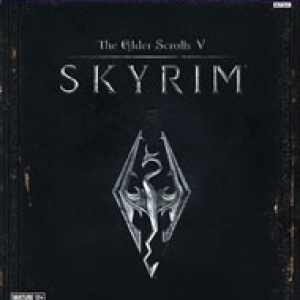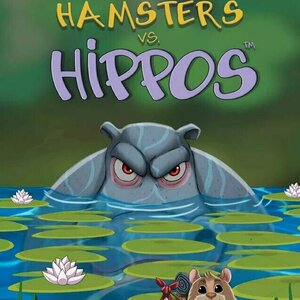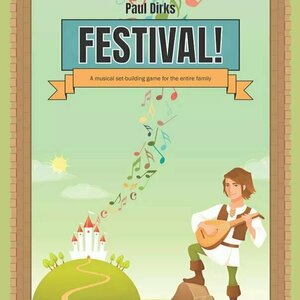Mothergamer (1604 KP) rated the PC version of The Elder Scrolls V: Skyrim in Video Games
Apr 3, 2019
Having ten different races to choose from is very cool and I decided on Wood Elf for my first play through, but for my next one I do want to play as a Khajiit (cat race) because they sound quite interesting. I was a little disappointed while creating my Wood Elf that the faces looked rather harsh and every expression looked like she was angry and ready to smash your face. It wasn't a big deal, but I wondered about the idea behind that design. Having played Elder Scrolls Online, the character design for the Elves has improved a lot, so maybe it had something to do with their design engine.
I did manage to create my character the way I liked eventually and once I was satisfied, I decided it was time for Pirotess to start her adventure (yes, I'm a Record of Lodoss War fan so I'm always Pirotess) and start exploring the world of Tamriel.
My Wood Elf Pirotess, ready for adventure!
There is so much to see and do in Skyrim. The game itself is huge and then you add the DLCs and there's even more to do. I got the initial introduction tutorial out of the way and the set up for the main story and then I ran around picking up quests. Between the radiant quests, side quests, and guild quests you never run out of adventures. I liked the Thieves Guild quests a lot because the story line for it was interesting. The Dark Brotherhood quests were also fun to do because of the great story content. My favorite armor was the Nightingale armor which was a reward for completing the Thieves Guild story line. I also liked my Dark Brotherhood mount which I jokingly called demon horse. His name was Shadowmere however and he was cool. He would go everywhere with me and he would even fight enemies with me which I thought was fantastic.
The Nightingale armor is the best!
If you want to take a break from adventuring, you can do things like crafting or build your own house with the Hearthfire DLC. You can also get married and adopt children with Hearthfire. This was one of the things that I found showed off the beauty of the gameplay in Skyrim. You can do as much or as little of the main story quests as you want. You can just run around crafting things, do side quests, or go hunting dragons. It's entirely up to you and gives you a vast amount of freedom for exploration and discovery. For me, it made the game a lot of fun and I just enjoyed running around discovering new places.
I also loved battling all the dragons and finding all the dragon shouts for my Dragonborn character. The battles are epic and the controls handle very smoothly. I love it when a game has great game controls and good camera angles. It definitely makes fighting a huge dragon easier. I enjoyed playing with all the different dragon shouts seeing what each one did. My favorites were frost breath and dragon aspect. Because of that exploration freedom level grinding was not a chore at all. I was just having fun and enjoying the game.
Taking down a dragon.
The environments are beautiful. I would find myself stopping often just to look around the different areas I was in because they are so well done. Whether it was a forest, snowy peak, or Dwarven ruin it always looked amazing and no two places looked alike. The musical soundtrack is amazing too setting the right atmosphere for each moment in the game.
You get followers too, but you can only have one at a time with you. Unfortunately if they die, they're dead for good unless you have the mods. I learned that the hard way with a couple of mine as they suffered from death by dragon. Most of the time, I just wandered alone because sometimes the followers would do stupid things like step on a switch and set off a trap. Once in a while I would take a follower with me just to change things up, usually a mage because they were useful for fighting dragons.
A beautiful view in Skyrim.
I enjoyed the main story in Skyrim as well. The lore was intriguing and some of the reveals about certain characters made for a great story. I also liked that a couple of the dragons were allies of a sort. I thought the dragon Paarthurnax was very cool and learning a few dragon shouts from him was fun. I was also thrilled that Pirotess got to fly on a dragon also. It was quite a sight! I finished the main story and it was a great finish to a fantastic story.
Pirotess chatting with Paarthurnax.
While the main story is finished, there's still a ton of things for me to do. I'm currently playing the Dawnguard and Dragonborn DLC as well as more side quests. I'm also enjoying crafting and building my houses with the Hearthfire DLC. For me, Skyrim is a blast to play and I love that there's always something going on and I continue to explore and have fun. There's always interesting things to see and I can't wait to play as a Khajiit for my next play through. Skyrim is a great game and I'm glad I finally got a chance to play it.

Planet of Heroes - Brawl MOBA
Games
App
Looking for an exciting real time war game for smartphones? Welcome to Planet of Heroes: stunning...
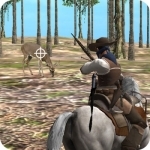
Archery Wild Animal Hunter
Games and Entertainment
App
This action games ultraistic 3d graphics, easy controls and amazing animations makes your playing...

Speaking the Speech
Book
Why does Shakespeare write in the way he does? And how can actors and directors get the most out of...
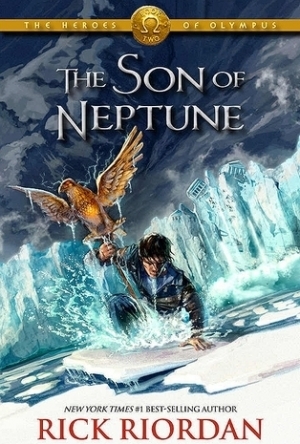
The Son of Neptune (The Heroes of Olympus #2)
Book
Seven half-bloods shall answer the call, To storm or fire the world must fall. An oath to keep...
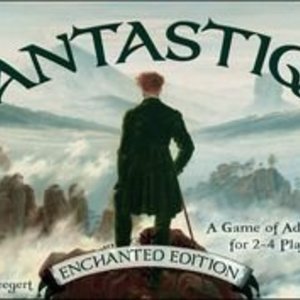
Fantastiqa
Tabletop Game
Welcome to the wild, weird world of FANTASTIQA! Fantastiqa is a deck-building board game set in a...
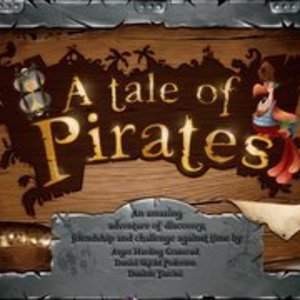
A Tale of Pirates
Tabletop Game
Put on your captain's hat and navigate the 3D pirate ship using sand timers in this unique real-time...
Purple Phoenix Games (2266 KP) rated Hamsters vs. Hippos in Tabletop Games
Oct 1, 2021
Hamsters vs. Hippos is a press-your-luck tile flipping game where players are cute little hamsterinos escaping the zoo and nearing freedom. However, along the way they must traverse the hippo enclosure. Typically hippos only eat grass, but in this game universe they are attracted to the delectable little rodents and are as hangry as my kids after a day at the playground. The hamster who can collect the most lotus flowers from the hippo lily pads at the end of the game will be the winner and be able to escape the zoo in peace. All other players will be snacked.
DISCLAIMER: We were provided a copy of this game for the purposes of this review. This is a retail copy of the game, so what you see in these photos is exactly what would be received in your box. I do not intend to cover every single rule included in the rulebook, but will describe the overall game flow and major rule set so that our readers may get a sense of how the game plays. For more in depth rules, you may purchase a copy online or from your FLGS. -T
To setup, determine the appropriate grid size for the number of players per the rulebook. Shuffle all the lily pad tiles face-down, place them in the grid, then place upon them nine lotus flower tokens. Each player will select their hamsteeple and mat and the game may now begin!
Hamsters vs. Hippos is played over four rounds and each turn players will have two actions they must complete. For the first action, each hamster must move onto the grid to explore a face-down tile, or explore another face-down tile if already on the grid. For the second action the hamster may continue exploring new tiles or be taken off the grid to score their collected lotus flowers. Movement can be orthogonally or diagonally, but every time they move, the hamsters must move to an unexplored tile. Flipping these tiles will reveal empty lily pads, some special actions to be taken, lotus flowers to be collected, or hippos that end the hamster’s round and makes the hamster forfeit their collected lotus flowers this round.
The game continues in this fashion over four rounds where hamsters are moving onto and off the grid, moving around the grid, collecting flowers, and possibly being eaten. At the end of the fourth round players total their lotus flowers they were able to keep and the hamster with the most lotus flowers wins!
Components. This one is easy. This game is a bunch of lily pad tiles, some cardstock player mats, wooden lotus flower tokens, and cute little hamsteeples. The tiles are good quality, the player mats are big and nice, and the hamsteeples are precious. I enjoy the lighthearted art style quite a bit – even the angry-looking hippo tiles. My only issue lies with the lotus flower tokens. They are very thin painted wooden tokens in two colors – pastel pink (worth 1 VP)and slightly darker pastel purple (worth 3 VP). I am not colorblind, but I like to make mention of items I would think are not colorblind friendly. The difference in color is not great enough, even for me of acceptable color differentiation. Another thing about these is they are very thin and delicate. Normally this isn’t an issue for me, but this is clearly a game my children want to play. When they play this with me I am always holding my breath just waiting for them to break a lotus flower. It hasn’t happened yet, but I might see about adding sturdier components to my copy when I play with little ones.
Game play is very very light. This is purely a press-your-luck game of deciding to move to a tile, flipping it over, and hoping for the best. There are a few special action tiles that can help mitigate the luck factor a little, but most of the time it’s a leap before you look scenario. That may turn off a large faction of gamers, but I will be playing this primarily with my children (who are nowhere near the suggested age of 8+). I could have reviewed this under our Kids Table series, but it doesn’t seem to be marketed specifically to children. As a game for adults, this is novelty at best, but for children it’s a decent press-your-luck style game. Purple Phoenix Games gives this one a 4 / 6, but only because it works so well with kids. If I didn’t have children I couldn’t see myself playing it a whole lot at all. Consider this when you look at the amazing cover art and intriguing theme. It’s good for what it is, but will not be for all collections and play groups.

iTalk Arabic: Conversation guide - Learn to speak a language with audio phrasebook, vocabulary expressions, grammar exercises and tests for english speakers
Education and Travel
App
▶ Speak Arabic with perfect native accent, in no time! ▶ Record your voice and hear what an...
Purple Phoenix Games (2266 KP) rated Festival! in Tabletop Games
Nov 24, 2020
Festival! is a competitive set collection game for larger groups, three to seven players. It is set in a medieval kingdom and the game lasts for four festivals. During the game players will be collecting sets of cards to be scored immediately and collecting other cards to be scored at the game’s end.
DISCLAIMER: We were provided a prototype copy of this game for the purposes of this review. These are preview copy components, and I do not know for sure if the final components will be any different from these shown. Also, it is not my intention to detail every rule in the game, but give an idea of how the game plays. You are invited to download the rulebook, back the game through the forthcoming Kickstarter campaign, or through any retailers stocking it after fulfillment. -T
To setup, place the board in the middle of the table. Each player chooses a color of pawn to represent them and places one pawn on the 0 space upon the scoring track and the other pawn in the Festival! area upon the board. The game comes with four different types of cards and each type will be shuffled and placed face-down in stacks as in the photo below. Place the festival marker on either the 0 or 4 space (the rules are not clear, but it is to track the number of festivals, so just choose one) and give the first player busteeple to the youngest player. The game may now begin.
Festival! is played over several turns, but the first three turns will see players taking turns to travel to the different areas of the board and collect cards once they arrive. The initial Festival! area is located between the City and Village areas so a player can choose to move their pawn into either of those areas. As is printed on the board areas themselves, when players arrive in the Country they will immediately draw three Ensemble (green) cards to their hand and their turn is over. A trip to the Village affords the player two Ensemble cards to be drawn, while a visit to the City will allow a player to either draw one Ensemble card OR play as many cards from their hand as they choose. Finally, should the player’s wanderlust urge them to the Palace, they may draw a Palace card to be played to their tableau immediately. Movement from one area to the next is always done to the adjacent area. So if in the Village a player may only move to either the Country or the City. If in the Country a player may only move to the Village.
As I mentioned, the first three turns are head start rounds where players are merely collecting cards to amass a hand (of limit 7) of cards that can be played in sets in their personal tableau. These cards are divided into Exotic, Percussion, Melodic, and Choir cards. Players may play as many cards as they like when in the City, but will score bonus set and superset points if they are able to lay down multiple unique cards in each group. For example, a Horn card is worth one VP alone, but with three other unique Melodic cards earns bonus points for the entire set.
After the first three turns have been played, the first player will then flip a Festival card (stacked on the game board) at the beginning of each turn. It is from this stack that the four “Festival!” cards are located, and they are the time trackers for the game. If the result is “Preparation,” the turns continue as normal with no change. However, should the flipped card be a “Festival!” face, then players within range of the Festival Stages may claim a stage and participate in the festival. Participation in the festival simply means that players may play cards as normally played in the City, but then are entitled to one of the drawn Finale cards. These cards are scored at the end of the game and typically award bonus points for various reasons.
Play continues in this fashion of traveling the board areas to collect cards, performing in festivals, and earning the most amount of VP at game end, which is immediately following the fourth festival. The player with the most VP is the winner!
Components. Again, this is a prototype copy of the game, so the components may be different upon completion of a successful Kickstarter campaign. What we were provided, however, is a good-looking, though muted, game board, a ton of cards, and some painted wooden tokens. The tokens are fine, and I am sure will look different once the game is finalized. The cards are good, an interesting dimension, and the art upon them is good and simple. In fact, the cards’ art remind me of several computer icon sets, specifically Shadow or Sardi (though I use Sweet-Rainbow).
But how does it play? Okay, every time I get a new game I always play it solo multi-handed. During this initial play I had several questions for the designer about scenarios and other oddities that were not covered in the rulebook. He graciously, and immediately, answered my questions and the next play through ran quite smoothly. So I am sure the rulebook will be tweaked quite a bit before final production.
Once I was playing the right way the game ran smoothly and quickly. I found myself planning my turn in advance, however your success truly is dependent on the cards you draw. Ensemble cards are just the instruments, voices, and Minstrel (wild) cards, while the Palace cards are the rule-breaking fun cards. They allow increased travel, protection from certain cards in the deck, and other goodies I won’t spoil here. So having a nice collection of Palace cards can alleviate a lot of the random card draw issues that will plague players who refuse to grab the Palace cards. As I played more and more I found that I generally follow one strategy, but have to switch up tactics depending on my card draws. This is good and okay (not “bad”). Going in with a plan of attack is great, and being able to become flexible mid-game is enjoyable.
Overall this one is surprising to me because I was initially frustrated with the vague rulebook, but once I truly knew the real rules and how everything played together I found a real fondness for it. Festival! will probably never make it close to my Top 10 Games of All Time list, but for larger groups who are tiring of the hidden traitor or social deduction games, this one is a breath of fresh air. It can handle up to seven players, and is an easier teach than many other games for mid-to-large groups.
So if you are looking for something different for a weird player count, and you need some more medieval rock star games in your collection please check out Festival!. (Do I need the period there or am I covered with the exclamation point from the title of the game? I was not an English major.) I think you will be pleasantly surprised at how this unassuming set collection game (with aspects of take-that which I did not explore here) will perform. I am looking forward to following the Kickstarter campaign set to launch in Spring 2021, so keep it on your radars, people.
